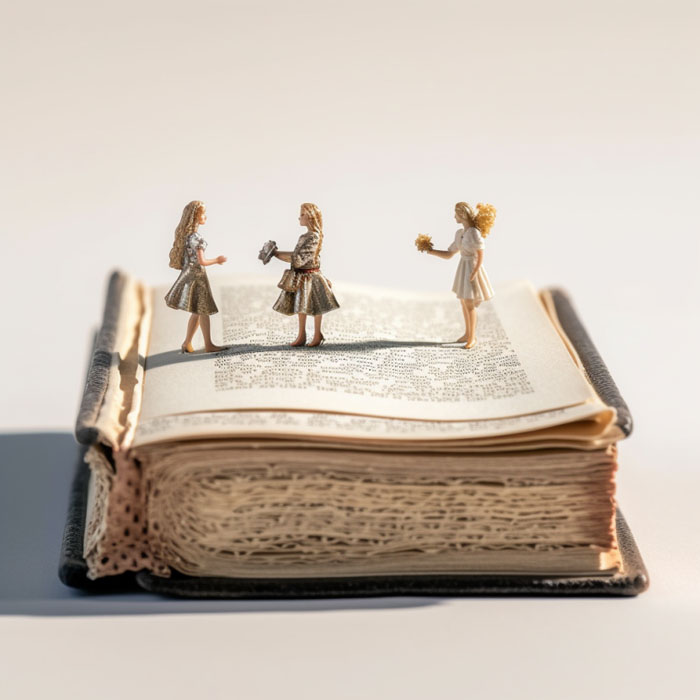Creating Ainiature Art for AI can be a delightful and intricate form of artistic expression. Miniature art involves creating small-scale artworks with meticulous attention to detail. Whether you’re painting, sculpting, or crafting miniature pieces, here’s a guide on how to create miniature art:



1. Select Your Medium:
- Choose a medium that suits your artistic vision and the scale you want to work with. Common mediums for miniature art include watercolors, acrylics, colored pencils, clay, paper, and even digital tools.
2. Choose Your Subject:
- Decide what you want to create in miniature. This can range from tiny landscapes, portraits, animals, or objects to intricate dioramas and scenes.
3. Select Your Tools and Materials:
- Gather the appropriate tools and materials for your chosen medium. These may include fine brushes, sculpting tools, miniature canvases, specialty papers, or any other supplies needed.
4. Plan and Sketch:
- Before starting your miniature art piece, sketch out your design on a small scale. Planning is crucial, especially when working with tiny dimensions.
5. Scale and Proportion:
- Pay meticulous attention to scale and proportion when working in miniature. Accurate scaling is essential to create realistic and visually pleasing results.
6. Detail and Precision:
- Focus on details with extreme precision. Use fine brushes or sculpting tools to create intricate textures, patterns, and features.
7. Patience and Steady Hand:
- Miniature art demands patience and a steady hand. Take your time, and if necessary, use magnifying tools to aid your work.
8. Experiment and Learn:
- Don’t be afraid to experiment with techniques and materials. Miniature art is a great space for creativity and innovation.
9. Lighting and Display:
- Consider the lighting conditions under which your miniature art will be viewed. Adequate lighting can enhance the visibility of tiny details. Additionally, think about how you want to display your miniature art; some artists create tiny frames or shadow boxes for their pieces.
10. Documentation:
- Photograph your miniature art using macro photography or a camera with a macro lens to capture the intricate details. This documentation is valuable for showcasing your work online or in a portfolio.
11. Protection and Storage:
- Ensure that your miniature art is properly protected from dust and damage. Store it in a dedicated box or display case when not in use.
12. Online Communities and Sharing:
- Join online communities of miniature artists to share your work, get feedback, and learn from others. Social media platforms like Instagram and Pinterest are great for showcasing miniature art.

Remember that working in miniature requires precision and dedication. It’s a unique form of art that can be incredibly rewarding. Whether you’re creating tiny paintings, sculptures, or intricate dioramas, the key is to infuse your passion and creativity into every small detail of your miniature art.
You can learn more Ainiature Art Prompts Here
Link :>

